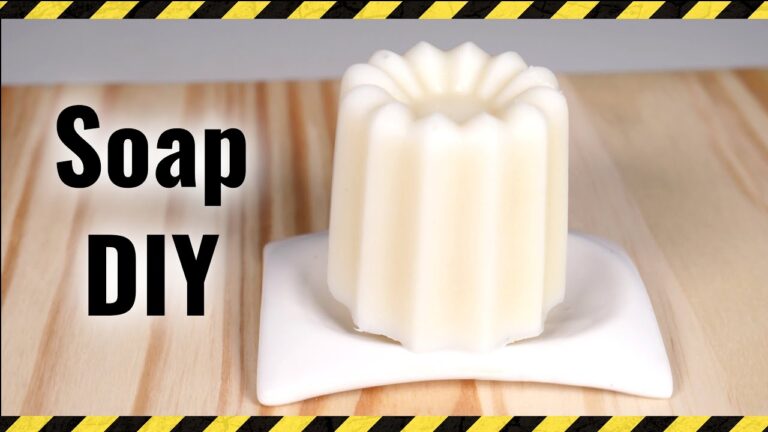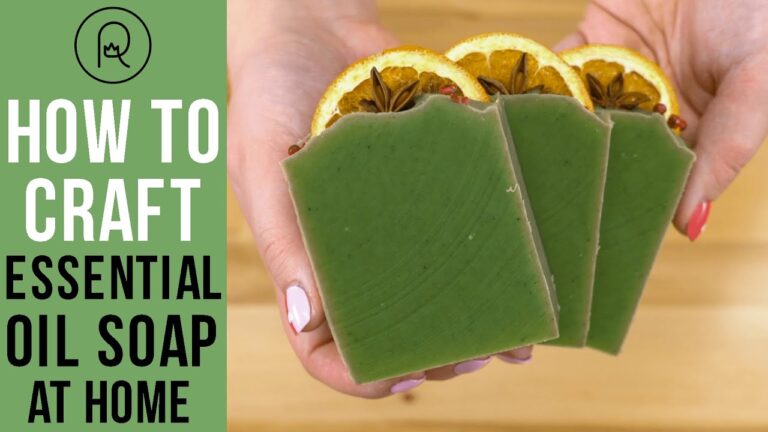Have you ever wondered how soap is made using the saponification process in cold process soap making? In this article, we will delve into the fascinating world of soap making, exploring the chemistry behind the saponification process and how it creates luxurious bars of soap. Join us as we uncover the secrets of creating beautiful and nourishing soap using this traditional method.
- Combination of oils and lye: In the saponification process of cold process soap, a precise combination of oils and lye is mixed together to form soap.
- Chemical reaction: The saponification process involves a chemical reaction between the oils and lye, resulting in the formation of soap and glycerin.
- Curing time: Cold process soap requires a curing time of several weeks to allow the soap to harden and fully saponify.
- Customization: One of the key benefits of the saponification process in cold process soap is the ability to customize the ingredients and scents used in the soap.
- Natural ingredients: Cold process soap is often made with natural ingredients, making it a popular choice for those looking for a more eco-friendly and skin-friendly option.
Advantages
- Allows for complete control over ingredients and customization of soap recipes
- Retains natural glycerin produced during the saponification process, resulting in a moisturizing soap
- Can create unique and artistic designs through swirling techniques and use of additives
- Produces a harder and longer-lasting bar of soap compared to hot process soap making
- Offers a more gentle and gradual heat source, preserving the benefits of essential oils and botanicals used in the soap making process
Disadvantages
- Time-consuming: The saponification process in cold process soap can take several weeks for the soap to fully cure and be ready for use, which can be a disadvantage for those looking for a quicker turnaround.
- Limited control: Unlike hot process soap making, the saponification process in cold process soap does not allow for as much control over the final product, as the soap takes longer to harden and may not always turn out as expected.
- Safety concerns: Working with lye, a necessary ingredient in the saponification process, can be dangerous if proper safety measures are not taken, which can be a disadvantage for those inexperienced or uncomfortable with handling such chemicals.
What does saponification mean in cold process soap making?
Cold process soap making is a time-honored technique that involves mixing fats or oils with lye to create a chemical reaction known as saponification. This process typically takes about 48 hours to complete, resulting in a luxurious bar of soap that is gentle on the skin.
During saponification, the fats and lye combine to form soap, with essential oils and colorants added for fragrance and aesthetics. This traditional method allows for complete control over the ingredients used, resulting in a high-quality, customizable product.
By understanding the saponification process, soap makers can create unique and personalized bars of soap that cater to the needs and preferences of their customers. The cold process method allows for creativity and precision, resulting in a product that is both effective and visually appealing.
What is the duration of saponification in cold process soap?
Experience the art of patience with cold process soap making. While saponification is mostly finished within the first 48 hours, the curing process can take up to a month. This ensures that any residual lye in the soap bars is completely neutralized, providing a gentle and safe product for your skin.
Delight in the craftsmanship of handmade soap as it transforms from raw ingredients to a luxurious and nourishing product. Give your creations the time they need to fully mature and be ready for use, allowing you to enjoy a soothing and cleansing experience without any risk of irritation.
What is the purpose of saponification?
Saponification serves the purpose of effectively removing colorless contaminating lipid material and destroying chlorophyll in carotenoid analysis in foods. This process, also known as alkaline hydrolysis, is crucial for obtaining accurate and reliable results in the analysis of carotenoids. By using saponification, researchers can ensure that the samples they are examining are free from unwanted substances that could interfere with their findings.
Furthermore, saponification plays a key role in enhancing the quality and accuracy of food analysis. By eliminating interfering compounds, such as lipid material and chlorophyll, saponification allows scientists to focus specifically on the carotenoids present in the food samples. This is essential for understanding the nutritional content and properties of the food, as well as for developing and improving food products. Ultimately, the purpose of saponification is to provide researchers and food industry professionals with reliable data and insights that can contribute to advancements in food science and technology.
Master the Art of Cold Process Soap Making
Learn the art of cold process soap making and elevate your skincare routine with handmade, natural products. Discover the therapeutic benefits of creating your own soaps using simple ingredients and personalized scents. Unleash your creativity and craft unique designs that will leave your skin feeling nourished and rejuvenated.
Join the growing community of cold process soap makers and master the techniques needed to create luxurious bars of soap. From choosing the right oils to perfecting the curing process, delve into the world of soap making and unleash your inner artisan. With practice and dedication, you can achieve beautiful results that not only benefit your skin but also bring a sense of satisfaction and pride in your craft.
Unleash Your Creativity with Saponification
Unleash your creativity with the art of saponification. Whether you’re a beginner or an experienced soap maker, the possibilities are endless when it comes to crafting unique and luxurious soaps. With a variety of oils, scents, and additives to choose from, you can experiment with different combinations to create your own personalized soap masterpieces.
Saponification is not only a fun and fulfilling hobby, but it also allows you to customize your soaps to suit your skin’s needs. From moisturizing and nourishing to exfoliating and soothing, you have the freedom to tailor your creations to perfection. So why not dive into the world of saponification and unleash your inner artist? With endless opportunities for creativity and self-expression, you’ll be amazed at the beautiful and functional soaps you can bring to life.
Elevate Your Skincare Routine with Handmade Soap
Elevate Your Skincare Routine with Handmade Soap. Indulge in the luxurious experience of using handmade soap to nourish and pamper your skin. Our carefully crafted soaps are made with natural ingredients and essential oils, leaving your skin feeling clean, soft, and rejuvenated. Say goodbye to harsh chemicals and hello to a more holistic approach to skincare with our artisanal soaps. Elevate your daily routine and treat yourself to the ultimate self-care experience with our handmade soap collection.
In conclusion, the saponification process in cold process soap is a fascinating chemical reaction that transforms simple ingredients into a luxurious and nourishing product. By carefully combining oils, lye, and water, soap makers can create unique and personalized soaps with endless possibilities. Understanding the science behind saponification allows for greater creativity and control in the soap making process, resulting in beautifully crafted soaps that are gentle on the skin and a joy to use. Whether you’re a seasoned soap maker or a curious beginner, the saponification process is a key element in creating high-quality, handmade soaps that are both functional and beautiful.



